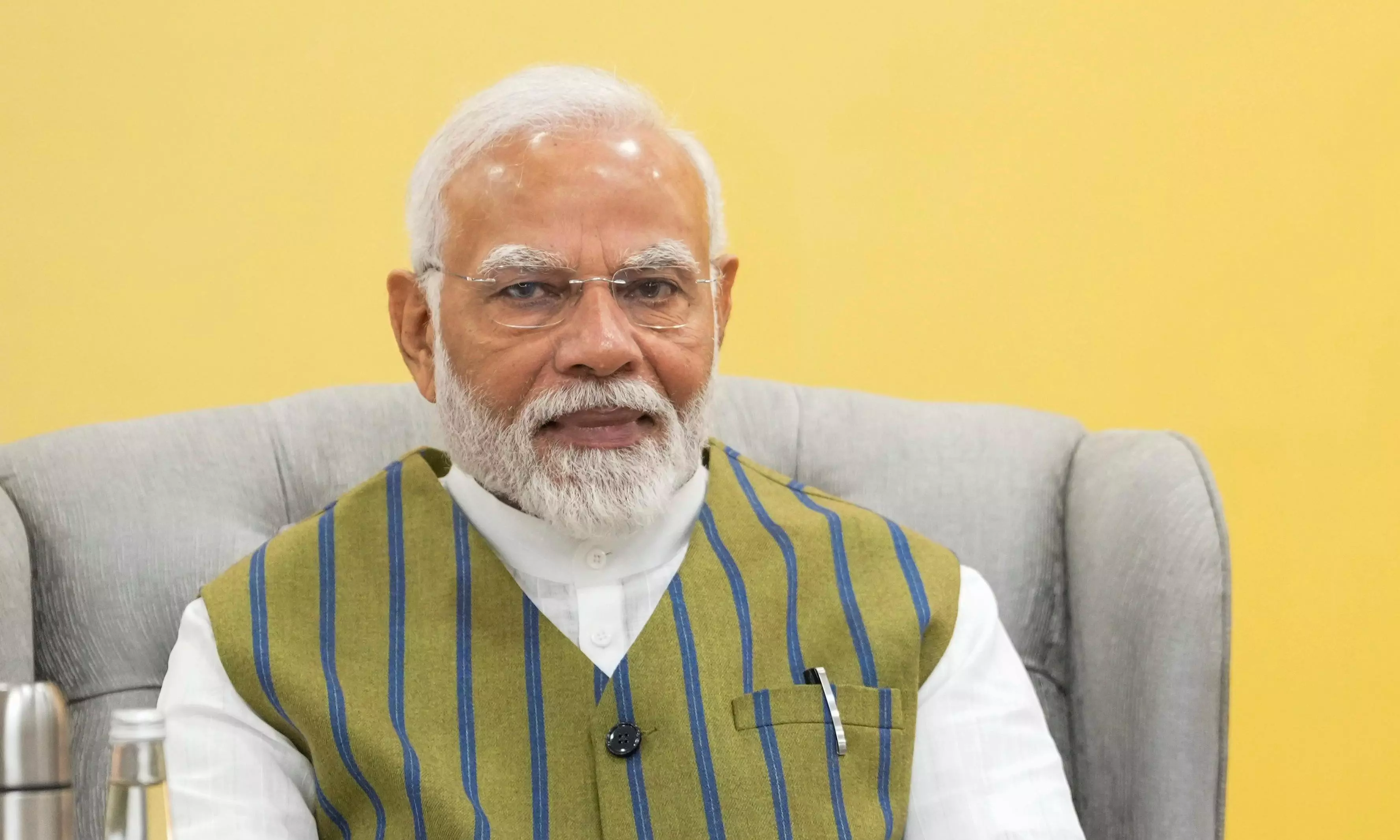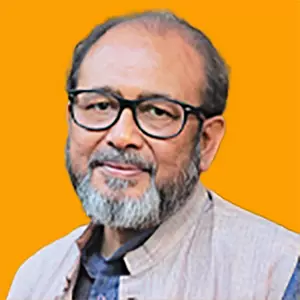
- Home
- India
- World
- Premium
- THE FEDERAL SPECIAL
- Analysis
- States
- Perspective
- Videos
- Sports
- Education
- Entertainment
- Elections
- Features
- Health
- Business
- Series
- In memoriam: Sheikh Mujibur Rahman
- Bishnoi's Men
- NEET TANGLE
- Economy Series
- Earth Day
- Kashmir’s Frozen Turbulence
- India@75
- The legend of Ramjanmabhoomi
- Liberalisation@30
- How to tame a dragon
- Celebrating biodiversity
- Farm Matters
- 50 days of solitude
- Bringing Migrants Home
- Budget 2020
- Jharkhand Votes
- The Federal Investigates
- The Federal Impact
- Vanishing Sand
- Gandhi @ 150
- Andhra Today
- Field report
- Operation Gulmarg
- Pandemic @1 Mn in India
- The Federal Year-End
- The Zero Year
- Science
- Brand studio
- Newsletter
- Elections 2024
- Events
- Home
- IndiaIndia
- World
- Analysis
- StatesStates
- PerspectivePerspective
- VideosVideos
- Sports
- Education
- Entertainment
- ElectionsElections
- Features
- Health
- BusinessBusiness
- Premium
- Loading...
Premium - Events

As Modi’s intent to stay on is amply clear, it's imperative to assess the broad contours of his rule from October 2001, the various phases and different personas because, in this time, Modi has evolved
In anticipation of Assembly election results from Jammu and Kashmir and Haryana, news related to Prime Minister Narendra Modi completing 23 years in elected public office on October 7 went largely unnoticed.
Importantly, however, he posted a thread on X (formerly Twitter), affirming he would continue to work tirelessly with more vigour and not rest until accomplishing the goal of achieving a “developed India”.
This underscored Modi’s desire not to step down when he turns 75 in September 2025. The statement allayed speculations of another leader replacing him in the context of strained relations between him and Rashtriya Swayamsevak Sangh (RSS) chief Mohan Bhagwat, whose critical remarks directed at Modi made headlines.
Haryana boosts Modi
The Assembly election result from Haryana, where the BJP returned to power for an unprecedented third term, has given further wind to Modi’s intentions to continue in office, setting no imminent date for retirement.
Also read | Mohan Bhagwat's Vijayadashami speech: Duality at best, duplicity at worst
The Prime Minister’s closest aides, Union Home Minister Amit Shah and party president and Health Minister JP Nadda, led cheerleaders on this watershed day. Expectedly, Shah termed Modi’s journey “a symbol of the unique dedication of how a person can devote his entire life to the national interest and welfare of people”.
Nadda said Modi “kept public service and nation-building paramount". "By instilling self-confidence in the people of the country, Modiji has given us the goal of a ‘developed India’," said Nadda.
Modi’s long innings
Because Modi’s intent to continue in office is amply clear, it is imperative to assess the broad contours of the period from October 2001, various phases and different personas because, in this time, Modi too has evolved.
Also read | How Hinduism tripped Modi's Hindutva agenda
Despite acts of omission and commission, not all he has accomplished is negative. In the 13 years with him at the helm of Gujarat, besides throttling multiple wings of the state and regimenting society and its discourse, his government took the state’s growth story forward.
In time, this became the template to be extrapolated at the Centre in the name of ‘Gujarat Model’.
Positives and negatives
Likewise, in the past 10 years as Prime Minister, there have been several positive developments besides the constriction of democracy, rising inequality, concentration of power and wealth in the hands of a few, for which the electorate penalised him earlier this year in some parts of India.
It is interesting to note that Modi has consistently depicted himself as a reluctant occupant of public office, thereby acquiring a saintly halo of a person who has little longing for personal belongings.
Also read | Trade unions’ rejection of UPS latest reminder of Modi’s lowered stature
It is a different matter that his public personage, constantly projected to the world by the ubiquitous camera, is never packaged sans designer clothes, branded spectacles, watches and pens.
How did he become CM?
To return to his version of the circumstances when he became the Gujarat Chief Minister, Modi has narrated (he told me this when I was researching for his biography) this: He was asked by former Prime Minister Atal Bihari Vajpayee out of the blue to go to Gandhinagar and assume office. At that moment, he was attending the cremation ceremony of a cameraperson with a TV channel who died in the plane crash in which Madhavrao Scindia also died, on September 30, 2001.
At a meeting with Vajpayee later that evening, Modi said he was unprepared and disinclined. Despite his reluctance, however, it was Lal Krishna Advani’s stern directive the next day that left Modi with no option but to comply.
Others in the party, however, have an alternate version: Modi sought the job from when he became the BJP general secretary in 1998, they say. The ‘truth’, like always, is somewhere in between these versions. But he was never a selfless saint with zero ambition to wield power.
Modi’s self-claimed virtues
Modi also recurringly claims that he was merely a “humble karyakarta” who was elevated by his party. He has a constant refrain about his modest economic family profile.
Also read | Prosecution of Arundhati Roy meant to show Modi 3.0 has teeth intact
But he never states that numerous functionaries of the BJP-RSS, including his predecessor Keshubhai Patel, did not come from privileged backgrounds either.
Modi’s brief in Gujarat was to revive the BJP’s electoral fortunes which had taken a beating in several by-elections under Patel’s stewardship. He would have failed but for the Godhra carnage and the subsequent Gujarat riots.
Godhra killings and after
After becoming the Chief Minister, despite energetically championing rehabilitation and reconstruction programmes in Kutch, the BJP’s electoral slide continued. Even in the by-elections for three Assembly seats in February 2002, only Modi, who had to get elected to the state Assembly within six months of becoming Chief Minister, won his seat.
The party’s fortunes, however, changed after February 27, 2002. As is well known, Modi used the developments to polarise the electorate on the basis of religious identity. In the Assembly elections, the party secured a two-thirds majority.
With his re-election, Modi was politically reincarnated as the Hindu Hriday Samrat and this became a winning formula for the next five years even within the party and the next Assembly polls, in 2007.
Sonia’s slip, Modi’s advantage
Between 2002 and 2007, Modi had, to some extent, revived the state’s economy by securing investment confidence. For some of this, he got good backing from the state’s industrialists and also by questionable coercive actions.
The majoritarian narrative had not moved away but was not the centre-piece during the early stages of Modi’s campaign for the 2007 polls.
He was, however, worried about making a comeback; it is only in hindsight that the electoral battle appears to have been effortless. His re-election was in fact not very certain till Sonia Gandhi used the uncalled-for ‘merchants of death’ slur.
Also read | Series of diplomatic setbacks puts question mark on Modi’s foreign policy
After victory, considerably aided by that barb, he further tightened the stranglehold of the state’s bureaucratic systems and made the powerful Chief Minister’s Office more centralised, with no else being deployed save a handful of loyal officials.
Unveiling the Gujarat Model
Within a year of re-election, a god-sent gift landed on his lap on the seventh anniversary of his becoming the Chief Minister: Tata Motors chose Sanand in Gujarat for its Nano car project after announcing its withdrawal from West Bengal.
Overnight, Modi made a transition from Hindu Hriday Samrat to Vikas Purush, as several other corporate giants made a beeline to Gujarat, following the footsteps of Ratan Tata. Modi immediately began strategising to secure power at the Centre.
The ‘Gujarat Model’ was given further shape and raved about without anyone really comprehending its contours. It consisted primarily of infrastructure-based development, preference for a chosen few business groups and personalities, fast-tracked privatisation (a process that was given impetus as early as 2005), centralisation of power in the bureaucrat-run CMO, targeting of adversaries, media management, large-scale privatisation, and obfuscation of the ‘truth’ of 2002.
Inequality under Modi
By 2012, when the Manmohan Singh government began faltering, Modi stepped in to project himself as a ‘decisive’ leader that many Indians craved for. That was when he also resorted to spin puns on Manmohan's name, including one that parodied his name as a ‘silent one’ in Hindi.
In his years as the Prime Minister, Modi abandoned the path of swift economic reforms because he knew that to be successful in Indian politics, all leaders had to ‘be seen’ as being pro-poor.
Despite pursuing various welfare programmes with gusto and benefiting electorally with the creation of the labharti (beneficiary) constituency, slippages started becoming evident as inequality spawned. Every episode in the nation’s life had two facets to its – one which the government projected and the other which the people felt.
Two facets of Modi rule
If the government claimed that it saved lives during COVID with a lockdown at virtually no notice, the people, after having trudged for hundreds of kilometres to reach their villages, over time felt the pinch of not being able to regain the jobs they lost.
Watch | India-Canada stalemate: Will it impact Indians in Canada?
The paradox of a growing economy — India’s global ranking rising economically stands — in contrast to unprecedented unemployed numbers.
Sabka Saath-Sabka Vikas-Sabka Vishwas has been and continues to be parroted while hate speeches and lynching have become the norm and the sense of insecurity and alienation among religious minorities has grown.
If technology has eliminated certain mechanisms of corruption at the grassroots, new routes for extracting money from the common man have been discovered. Alongside, cronyism has reared its head like nothing before and become the new normal.
Modi years: Contrasting narratives
The Modi years, in Gujarat as well as at the national level, remain a story of two contrasting narratives. From the beginning, Modi wanted to be part of history and, with his tenure poised to continue, he has secured this position.
It remains an open question how historians of the future will interpret these years and how Modi will be remembered by people.
Will demonetisation be placed alongside Muhammed Bin Tughlaq’s blunder of introducing token money? Will Modi be called a leader for whom ‘democracy’ was merely a preaching and not practice?
25 years in public office
There are numerous other questions that can be asked and achievements which can be listed. His hope will be that the people do not start listing them endlessly as he prepares to celebrate 25 years in public office over the next two years.
Modi will hope that he can begin paving the road to this watershed milestone in October 2026, with victories in Maharashtra and Jharkhand.
Anything less will once again resurrect the bad dream that this year’s Lok Sabha elections was.
(The Federal seeks to present views and opinions from all sides of the spectrum. The information, ideas or opinions in the article are of the author and do not necessarily reflect the views of The Federal.)


